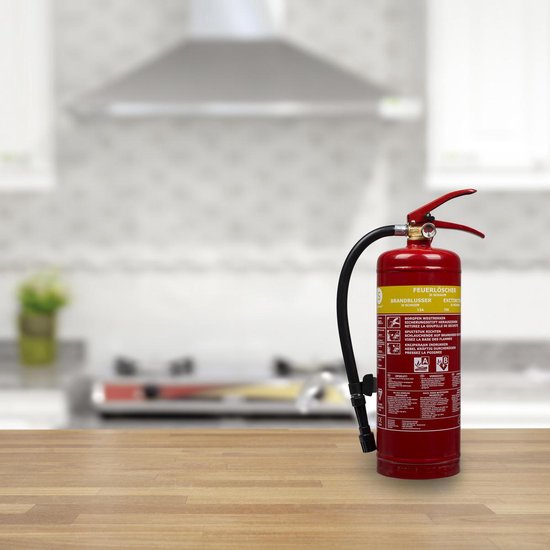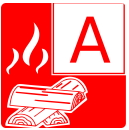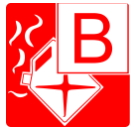Fire extinguishers: types & differences
A fire extinguisher is mandatory in every working environment due to safety standards. Although fire extinguishers are not directly compulsory in the private sphere, there is an rapidly increasing need to install a suitable fire extinguisher in homes. Approximately half of the house fires are caused in the kitchen. Therefore, make sure that you are well prepared for a possible fire in your home. Read our blog to get informed about the different type of fire fire classes and the different fire extinguishers that Smartwares offers.
How does a fire start?
A fire can only start if sufficient oxygen is present. In addition to oxygen, there must also be a fuel (solid, liquid or gas). Finally, a certain temperature must be reached for the fire to burn. Each fuel has a different ignition temperature. By removing one or more of the three elements, the fire will be extinguished. In general, a fire can be divided into several different fire classes. Therefore, not every fire extinguisher is suitable to extinguish all fires.
Do you want to know more about fire safety of your home? Then read our blog about fire safety.

Different fire classes
Not every fire is the same, therefore there are certain fire classes in which a fire can be classified.

Fire class A

Fire class B

Fire class C

Fire class D

Fire class F
Different types of fire extinguishers
Now that we know what different types of fires can occur, we still have to choose the right extinguisher to extinguish the fire. The different extinguishers are as follows:
Extinguish with water
The most adequate extinguisher is obviously water. However, water is not suitable for extinguishing all fires. The water causes the temperature of the fire to drop but is very dangerous in combination with oil and electricity. Water can therefore only be used for extinguishing fire class A (solids).Powder extinguishers (ABC extinguishers)
A powder extinguisher is the most common and is also called an ABC extinguisher because this extinguisher can be used in all three fire classes. However, the disadvantage of the powder extinguisher is that it can often cause enormous collateral damage to electrical equipment (even if it is not directly used to extinguish the electrical equipment itself).Foam extinguishers
The foam extinguisher works with a mixture of water and foam. The foam reduces the supply of new oxygen, thus extinguishing the fire. A foam extinguisher is suitable for fire class A (solids) and fire class B (liquids and melting solids). A foam extinguisher is user-friendly, has a long spraying time and can extinguish under voltage (up to 1000 volts). However, this fire extinguisher is not frost-resistant and is more expensive than, for example, a powder extinguisher.CO2 extinguishers
A CO2 extinguisher is particularly suitable for fire class B (liquids and melting solids). The fire extinguisher contains CO2 which changes from liquid to gas under pressure. The gas on the one hand displaces the oxygen but also cools the fire because the gas is about -80 degrees Celsius. You can recognise this extinguisher by the large tube at the end of the hose. This fire extinguisher can also extinguish equipment under voltage, is frost-resistant and does not cause any collateral damage. However, the extinguisher is almost twice as heavy as other fire extinguishers and is relatively expensive. Because CO2 expels oxygen, it is also dangerous for humans and animals, they also no longer get any oxygen.Fat extinguishers
This fat extinguisher is the perfect fire extinguisher for the kitchen. The fat extinguisher is designed to extinguish fires with high temperatures caused while cooking (fire class F). The fire extinguisher contains a special extinguishant (a chemical extinguishing foam) which has an emulsifying property. The foam provides a sealing layer around the burning liquid and also cools the fire.Fire blankets
A fire blanket or fire blanket is a blanket that can be put over a fire to extinguish it at an early stage. The blanket is made of a non-flammable or very poorly flammable material. Nowadays woven fiberglass (applied in several layers) is widely used. Older fire blankets from before 1992 may still contain asbestos; it is recommended to replace them by a modern one.The fire blanket ensures that no new oxygen can reach the fire. The extinguisher is suitable for fire class A (solids) but not for fire class B or F (liquid and oil). A liquid substance retains the temperature for a longer time and can therefore spontaneously reignite after removing the blanket. It is therefore preferable not to use the fire blanket in the kitchen.
Lifespan of a fire extinguishers
Searching for a suitable fire extinguisher?
Smartwares offers a wide assortment of fire extinguishers. All Smartwares fire extinguishers comply with the strict European directives and are therefore in line with the latest legislation. With a fire extinguisher you can quickly act as soon as a fire breaks out in the kitchen or living room. This prevents life-threatening situations and prevents a possible fire from spreading quickly. View our entire range online.
